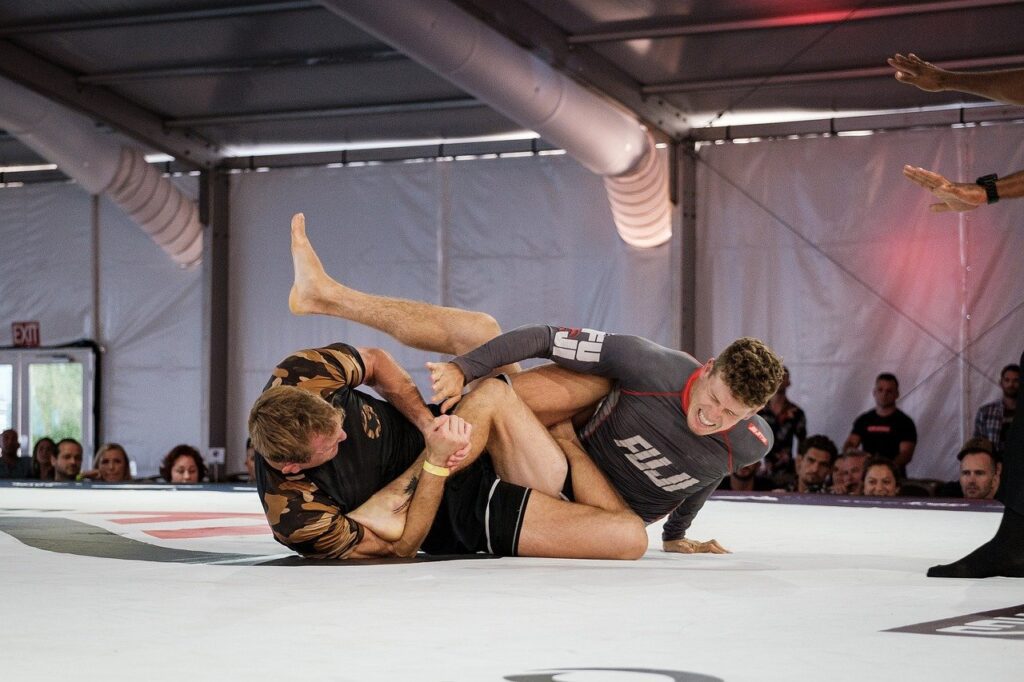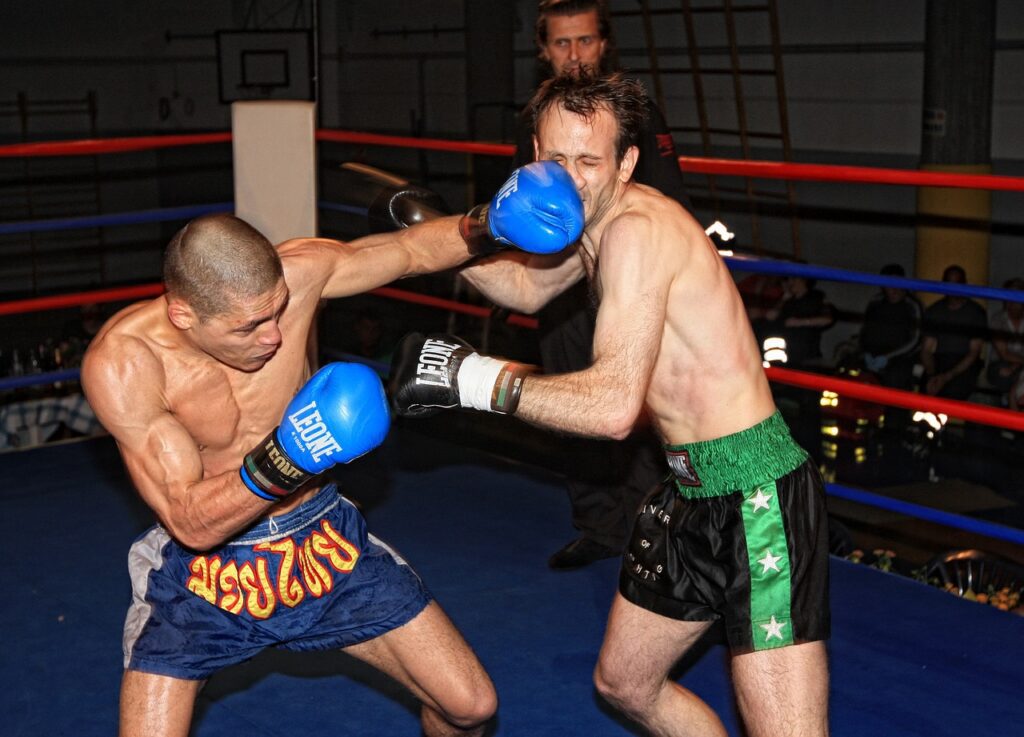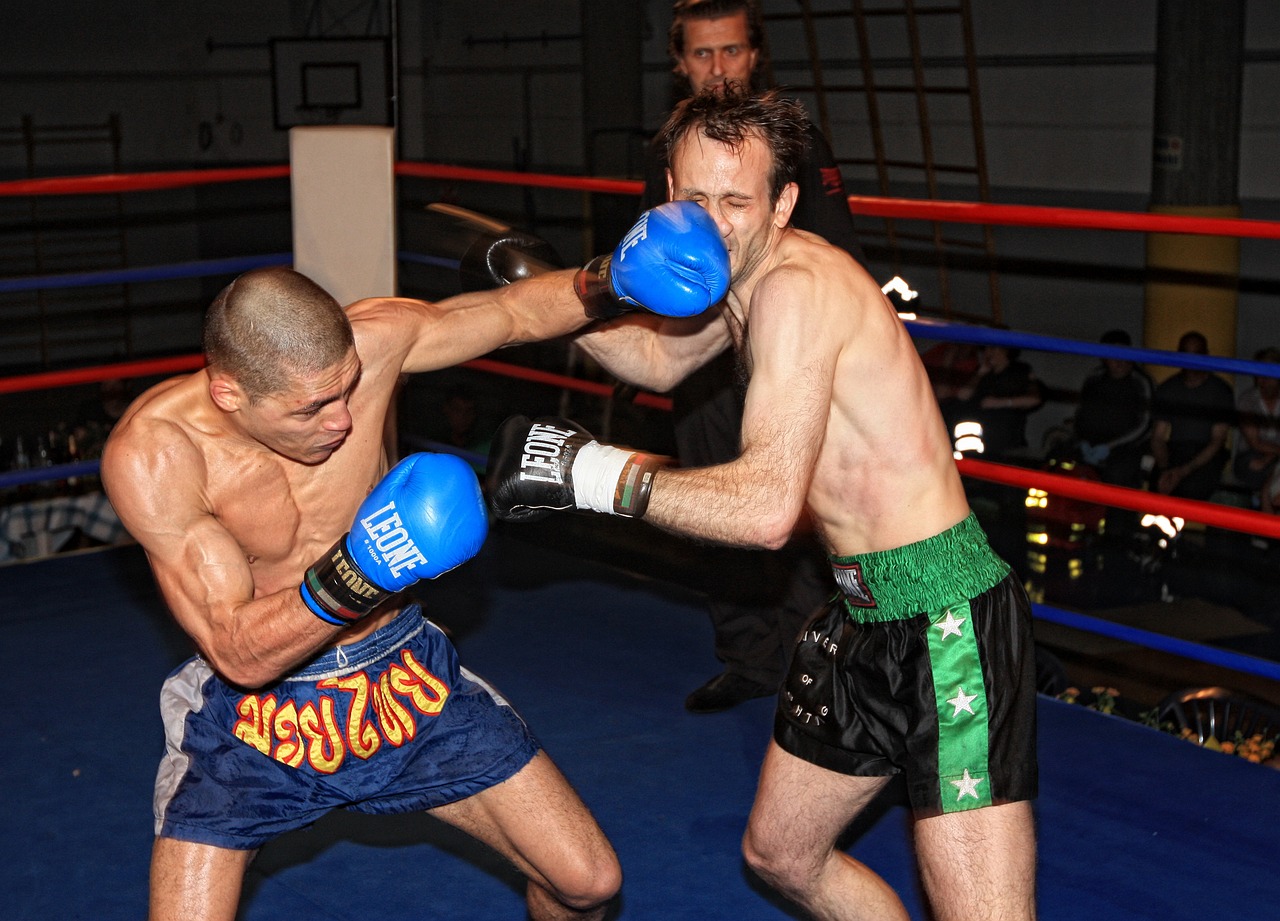In the world of martial arts, knowing how to counter takedowns is an essential skill that can turn the tables in a fight. Whether you’re a seasoned fighter or just starting out, having a few effective techniques up your sleeve can make all the difference. In this article, we’ll explore some of the best counters for takedowns, providing you with the knowledge and tools to defend yourself and gain the upper hand. So, let’s dive into the fascinating world of takedown counters and unlock a whole new level of self-defense mastery!
1. Understanding Takedowns
Takedown basics
When it comes to grappling and combat sports, understanding takedowns is essential. Takedowns refer to the techniques used to take an opponent down to the ground, gaining control and potentially scoring points. These techniques are commonly seen in sports such as wrestling, judo, and mixed martial arts (MMA). Takedown basics involve using various methods to unbalance your opponent, control their body, and take them down to the ground. It is a fundamental aspect of any combat sports training, and mastering takedowns can greatly enhance your overall fighting skills.
Importance of counters
While being proficient in executing takedowns is important, it is equally important to be able to effectively defend against them. Counters play a crucial role in takedown defense. By understanding and implementing counters, you can successfully neutralize your opponent’s takedown attempts, turning the tables in your favor. Counters involve utilizing defensive techniques in response to your opponent’s takedown attacks, allowing you to maintain control while avoiding being taken down yourself. With the right techniques and timing, counters can be a powerful tool in your arsenal.
Different types of takedowns
There are numerous types of takedowns, each with its own set of principles and techniques. Some common takedowns include double-leg takedowns, single-leg takedowns, body lock takedowns, and hip tosses. Double-leg takedowns involve shooting in and driving through your opponent’s legs to bring them down to the ground. Single-leg takedowns focus on taking one leg of your opponent, preferably the lead leg, and using it as a leverage point to bring them down. Body lock takedowns require establishing a tight grip around your opponent’s waist and using your own body positioning to break their balance. Hip tosses involve using your hip movement and leverage to throw your opponent over your back and onto the ground. Understanding the different types of takedowns allows you to have a well-rounded approach to both offense and defense in combat sports.
2. Defensive Techniques
Sprawling
Sprawling is a defensive technique commonly used in wrestling and MMA to counter double-leg takedown attempts. When your opponent goes for a double-leg takedown, sprawling involves sprawling your legs and hips backward while simultaneously pushing their head down. This motion creates a strong barrier and makes it difficult for your opponent to secure the takedown. By sprawling effectively, you can maintain your balance and prevent being taken down to the ground.
Whizzer/Overhook
The whizzer or overhook is another effective counter technique against takedowns. It involves using your arm to go over your opponent’s arm when they attempt a single-leg takedown. By doing so, you create a lever that allows you to control your opponent’s body and prevent them from completing the takedown. The whizzer is particularly useful in situations where you are unable to sprawl effectively. It provides a powerful counter by utilizing your arm strength and leverage to maintain control and avoid being taken down.
Go-behinds
Go-behinds are valuable defensive techniques that can be employed when your opponent attempts a rear waist lock takedown or body lock takedown. These takedowns require your opponent to establish a grip around your waist from behind, attempting to lift and take you down. By executing a go-behind, you quickly rotate your body and maneuver behind your opponent, reversing the situation and putting them in a vulnerable position. This defensive technique allows you to maintain control and avoid being taken down, giving you an advantageous position to attack or escape.

3. Offense-Defense Transitions
Scrambling
Scrambling refers to the quick and agile movements used to transition between offensive and defensive positions during takedown attempts. When your opponent initiates a takedown, scrambling involves using your agility, flexibility, and technique to avoid being taken down and possibly reversing the situation. It requires rapid adjustments and fluid motions to maintain control and seize advantageous positions. Scrambling is particularly effective in MMA, where being well-versed in both offensive and defensive transitions can be the key to success in a fight.
Front headlock
The front headlock is an offensive technique that can be used to transition from defense to offense during a takedown attempt. When your opponent shoots in for a takedown, the front headlock involves securing a grip around their head and neck, effectively controlling their upper body. From this position, you have several options to attack, including guillotine chokes and d’arce chokes, which we will discuss later. By effectively utilizing the front headlock, you can capitalize on your opponent’s takedown attempt and turn the tables in your favor.
Wrestling for control
Wrestling for control is an essential aspect of offense-defense transitions in takedowns. When engaged in a takedown battle with your opponent, the ability to establish and maintain control is crucial. This involves using various techniques such as hand fighting, pummeling, and maintaining proper body positioning. By winning the battle for control, you can dictate the pace and direction of the fight, increasing your chances of successfully executing takedowns or defending against your opponent’s attacks.
4. Effective Striking
Maintaining distance
Maintaining an appropriate distance is vital when engaging in striking exchanges and takedown defense. By understanding the range at which your strikes are most effective, you can keep your opponent at a distance that prevents them from easily initiating a takedown. By utilizing jabs, teeps, and push kicks, you can create space, disrupt your opponent’s rhythm, and keep them at bay. Maintaining distance allows you to control the fight and mitigate the risk of being taken down.
Utilizing angles
Angles play a significant role in striking and takedown defense. By utilizing angles effectively, you can create openings for strikes and make it difficult for your opponent to secure takedowns. Moving laterally and changing angles can keep your opponent off balance and make it challenging for them to close the distance for a takedown. By utilizing footwork and strategic movement, you can control the fight and dictate the pace, increasing the effectiveness of your striking while preventing takedowns.
Fast and accurate strikes
In the context of takedown defense, fast and accurate strikes are essential. Combining speed and precision in your strikes can disrupt your opponent’s takedown attempts and create openings for counterattacks. By efficiently landing strikes to the head, body, or legs, you can deter your opponent from pursuing takedowns. Fast and accurate strikes not only help in takedown defense but also enable you to maintain the offensive pressure, making it harder for your opponent to find openings for takedowns.

5. Submission Holds
Guillotine choke
The guillotine choke is a submission hold commonly employed in both grappling and MMA. It involves wrapping your arm around your opponent’s neck and applying pressure, cutting off their blood flow and air supply. The guillotine choke can be executed from various positions, including standing, kneeling, or from the guard. Utilizing this submission hold can serve as a counter to takedown attempts, as your opponent’s head becomes vulnerable during the setup or execution of takedowns. By mastering the guillotine choke, you can neutralize your opponent’s takedown attempts and potentially secure a submission victory.
D’Arce choke
The d’arce choke is another powerful submission hold used in grappling and MMA. It involves trapping your opponent’s head and arm against your own neck, creating immense pressure on their neck and shoulder. As with the guillotine choke, the d’arce choke can be an effective counter to takedowns. When your opponent attempts a takedown, their body positioning and arm placement provide opportunities to execute the d’arce choke. By capitalizing on these opportunities, you can thwart their takedown attempts and potentially secure a submission victory.
Kimura lock
The kimura lock is a versatile submission hold that targets the shoulder joint. By applying pressure to your opponent’s arm, you can control their movements and force them to submit. While it may not be a direct counter to takedowns, the kimura lock can be utilized as a transitional submission hold during takedown attempts. From positions such as the front headlock or guard, you can look for openings to secure the kimura lock and immobilize your opponent. Having a solid understanding of the kimura lock enhances your overall ground game and allows you to capitalize on takedown attempts.
6. Clinching Techniques
Underhooks
Underhooks are a valuable clinching technique used to control an opponent during stand-up exchanges and takedown defense. When engaged in a clinch, securing underhooks involves placing your arm underneath your opponent’s arm, close to their armpit. This grip allows you to control their upper body and dictate the direction of the fight. Underhooks provide leverage for takedown defense, as they make it difficult for your opponent to secure takedowns while allowing you to set up your own offensive attacks.
Overhooks
Overhooks are another clinching technique that offers control and defensive capabilities. A basic overhook involves securing your arm over your opponent’s arm, controlling their upper body and preventing them from effectively executing takedowns. By applying downward pressure and manipulating your opponent’s arm positioning, you can disrupt their balance and break their takedown attempts. Overhooks can also lead to offensive opportunities, such as submissions or transitions to advantageous positions.
Pummeling
Pummeling is a fundamental skill utilized in clinching and takedown defense. It involves an intricate series of hand exchanges and body movements designed to establish control and maintain superior positioning during a clinch. Pummeling allows you to secure underhooks, overhooks, or body locks, enhancing your takedown defense and offensive capabilities. By actively pummeling, you can disrupt your opponent’s takedowns and maintain the upper hand in the clinch, increasing your chances of dictating the fight’s outcome.

7. Ground Control and Escapes
Guard retention
Guard retention is a crucial skill in grappling and ground fighting. When your opponent attempts a takedown and brings the fight to the ground, maintaining your guard is essential. Your guard acts as a barrier to prevent your opponent from effectively passing and achieving dominant positions. By utilizing proper framing, hip movement, and active guard techniques, you can retain your guard and make it difficult for your opponent to control or submit you. Guard retention is a key component of ground control and defense, allowing you to neutralize your opponent’s attacks and potentially reverse the situation.
Shrimping
Shrimping is a fundamental movement used to create space and escape unfavorable positions on the ground. When your opponent establishes control or puts you in a compromising position, shrimping involves utilizing hip movement to create distance and improve your positioning. By combining hip movement with coordinated hand and leg placement, you can shrimp effectively and escape positions such as side control or mount. Shrimping is a versatile skill that can be utilized in both defensive and offensive situations, allowing you to regain control and potentially launch your own attacks.
Hip escapes
Similar to shrimping, hip escapes are used to escape unfavorable positions on the ground. Hip escapes involve shifting your hips and using your core muscles to create space and maneuver away from your opponent’s control. By combining hip escapes with proper framing and bridging, you can efficiently create distance and improve your position. Hip escapes are particularly effective when attempting to escape from mount or bottom side control positions. By mastering hip escapes, you can effectively nullify your opponent’s ground control and escape from dangerous positions.
8. Training Methods
Live sparring
Live sparring is an essential training method for developing effective takedown defense skills. By engaging in live sparring sessions with training partners, you can simulate real-time scenarios and apply your takedown defense techniques in a controlled environment. Live sparring allows you to test your reflexes, timing, and decision-making abilities, refining your ability to defend against takedowns. It also provides an opportunity to identify any weaknesses or areas of improvement in your takedown defense, allowing you to address them and become a better-rounded fighter.
Drilling specific takedown defense
Drilling specific takedown defense techniques is another effective training method to improve your takedown defense skills. By isolating specific takedown techniques and repeatedly practicing the associated defensive counters, you can develop muscle memory and improve your timing and execution. Through focused drilling, you can fine-tune your defensive techniques and ensure that they become second nature during live sparring or actual fights. Drilling specific takedown defense techniques helps you become more comfortable and confident in defending against various takedowns.
Simulated takedown scenarios
Simulated takedown scenarios involve setting up specific situations or scenarios that mimic real fight scenarios. By practicing takedown defense in simulated scenarios, you can improve your ability to react quickly and effectively to various takedown attempts. This type of training allows you to simulate the intensity and unpredictability of actual fights, enabling you to develop the necessary skills to counter takedowns in high-pressure situations. By incorporating simulated takedown scenarios into your training routine, you can improve your takedown defense skills and prepare yourself for a variety of fight scenarios.
9. Conditioning and Flexibility
Strength training
Strength training plays a vital role in enhancing your overall grappling and takedown defense abilities. By incorporating strength training exercises specific to the muscles involved in takedown defense, you can improve your strength, power, and endurance. Exercises such as squats, deadlifts, kettlebell swings, and pull-ups can help develop the necessary strength and explosive power required to sprawl, defend against takedowns, and control your opponent. Regular strength training sessions, coupled with proper technique training, can significantly enhance your takedown defense capabilities.
Cardiovascular endurance
Cardiovascular endurance is crucial in combat sports, including takedown defense. An effective takedown defense requires constant movement, explosive bursts of energy, and the ability to maintain a high pace. By incorporating aerobic and anaerobic exercises into your training routine, such as running, cycling, circuit training, and interval training, you can improve your cardiovascular endurance. Increasing your endurance allows you to sustain a high level of performance during takedown defense, ensuring that you can effectively defend against multiple takedown attempts without becoming fatigued.
Stretching routine
Flexibility plays a crucial role in takedown defense, as it allows you to move more freely, maintain proper body positioning, and execute defensive techniques with fluidity. Incorporating a regular stretching routine into your training regimen can improve your flexibility, reducing the risk of injuries and enhancing your overall effectiveness in takedown defense. Dynamic stretches, static stretches, and mobility exercises targeting specific muscle groups used in takedown defense can all contribute to improving your overall flexibility and range of motion.
10. Strategizing and Game Planning
Study opponents’ takedown techniques
One aspect of effective takedown defense is studying and understanding your opponents’ takedown techniques. By researching their previous matches and analyzing their tendencies, you can gain valuable insights into their preferred takedowns and setups. This knowledge allows you to develop specific defensive strategies and counters tailored to your opponents’ style. By studying opponents’ takedown techniques, you can anticipate and neutralize their attacks, significantly improving your takedown defense and overall fighting strategy.
Implementing counter strategies
Implementing counter strategies is a crucial element of effective takedown defense. By understanding the different types of counters, defensive techniques, and submission holds, you can develop a well-rounded defensive strategy. This involves recognizing your opponents’ takedown attempts, reacting appropriately, and executing the most suitable counters or defensive techniques. By consistently implementing counter strategies, you can disrupt your opponents’ game plan and increase your chances of successfully defending against takedowns.
Analyzing and adjusting during the fight
During a fight, the ability to analyze and adjust your takedown defense strategy is critical. As the fight progresses, you may encounter different situations or opponents who adapt their takedown techniques. By paying close attention and assessing your opponent’s patterns and adjustments, you can make intelligent decisions on the fly and adjust your takedown defense accordingly. This process involves remaining calm under pressure, staying focused, and being open to making necessary adjustments to neutralize your opponents’ takedown attempts effectively.
In conclusion, mastering takedown defense requires a combination of technical proficiency, physical conditioning, and strategic thinking. By understanding the basics of takedowns and the importance of counters, implementing effective defensive techniques, transitioning between offense and defense, striking with precision and speed, utilizing submission holds, clinching techniques, and ground control, and following a comprehensive training regimen, you can significantly enhance your takedown defense skills. Additionally, by studying your opponents, implementing counter strategies, and analyzing and adjusting during the fight, you can elevate your takedown defense to new heights. Start incorporating these techniques and strategies into your training, and watch your takedown defense abilities flourish.

